Do you have students who do well academically, however, struggle with certain “people” skills? These students may have decent scores on their tests, however, they require lengthy report card comments because they struggle to think critically or show problem-solving skills. These skills are what we call “soft skills”. The importance of teachers teaching students these soft skills is very important to students’ success.

Did you know 89% of employees who fail within the first 18 months on the job are because of a lack of soft skills? Skills such as critical thinking, creativity and conflict-resolution are so important and should be taught starting at a young age. Keep reading for 3 hurdles facing teachers teaching students soft skills at the elementary level.
Click here to download the Project-Based Learning and Soft Skills: The Complete Guide.
Hurdle #1 Facing Teachers Teaching Students Soft Skills-Lack of Information (or so you think!)
Most teachers know about these skills, however, would you believe that many don’t even know that they are called soft skills. How are you supposed to find value-packed information if you don’t even know what you are searching for???
The soft skills include skills such as:
- Communication
- Creativity
- Adaptability
- Leadership
- Conflict Management
- Critical Thinking
- Time Management
- Decision Making
- Stress Management
- Problem Solving
- And many more!
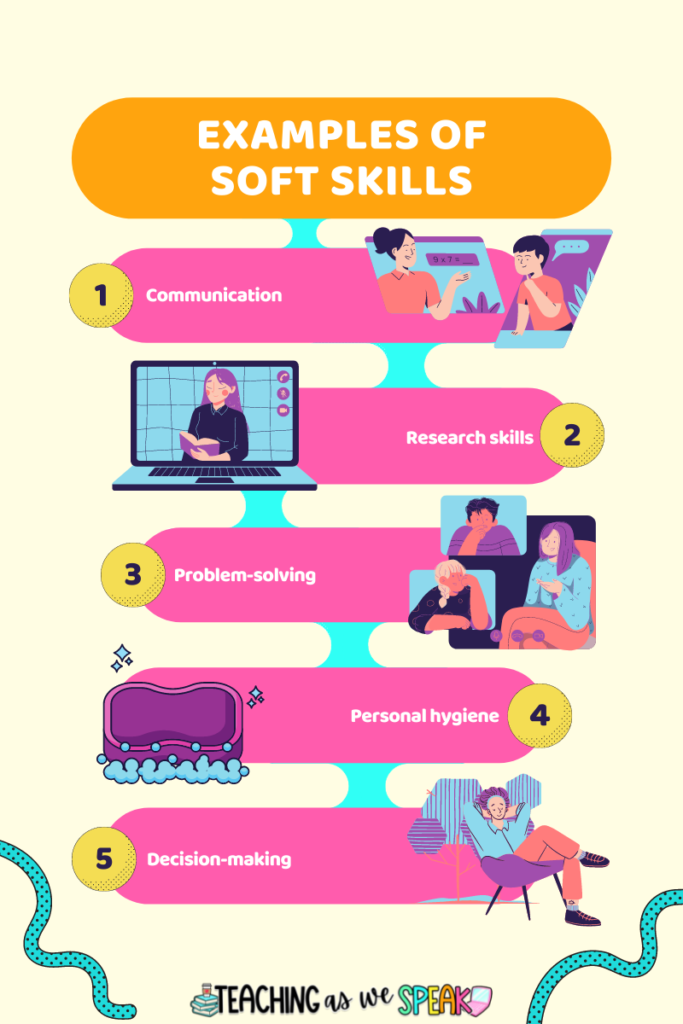
Once you know the right terms, it will make searching a lot simpler. Don’t have the time to search for helpful tips and strategies? Don’t worry, I’ve got you covered! In the Project-Based Learning and Soft Skills: The Complete Guide, I have curated helpful links, videos and resources that will inspire and help you improve your students’ soft skills. Click here to get the guide now!
Hurdle #2-Teachers Have Not Created the Culture-Yet!
Whether you are a teacher who practices project-based learning or not, it is important to create a culture for the type of learning you want to cultivate in your students. I would argue that classroom strategies don’t work because teachers don’t take time before starting to create the culture. This could mean spending days, or even weeks preparing students for the type of learning they will be immersed in.
One way to do this is by habit stacking. Habit stacking is when you start with one habit that is practiced every day. Once that habit is innate, you begin a new habit that will be ‘stacked’ onto the previous one.
So which habit should you start with your students first?
For this I will refer to one of my favourite books called The One Thing:
“On its own, a domino isn’t much. It’s about two inches tall and weighs about as much as a small box of matches. But with the domino comes a force. In fact, one domino has the capability of knocking down another one that is 1.5x its size. This seemingly infinitesimal ability compounds to produce incredible outcomes.
Imagine a long string of dominos lined up one after the other, with each one progressively 1.5x larger than the last. If you were to knock down the first two-inch domino, you would set off a chain reaction that would, by the 57th iteration, produce enough force to knock over a domino stretching the distance between the earth and the moon.”
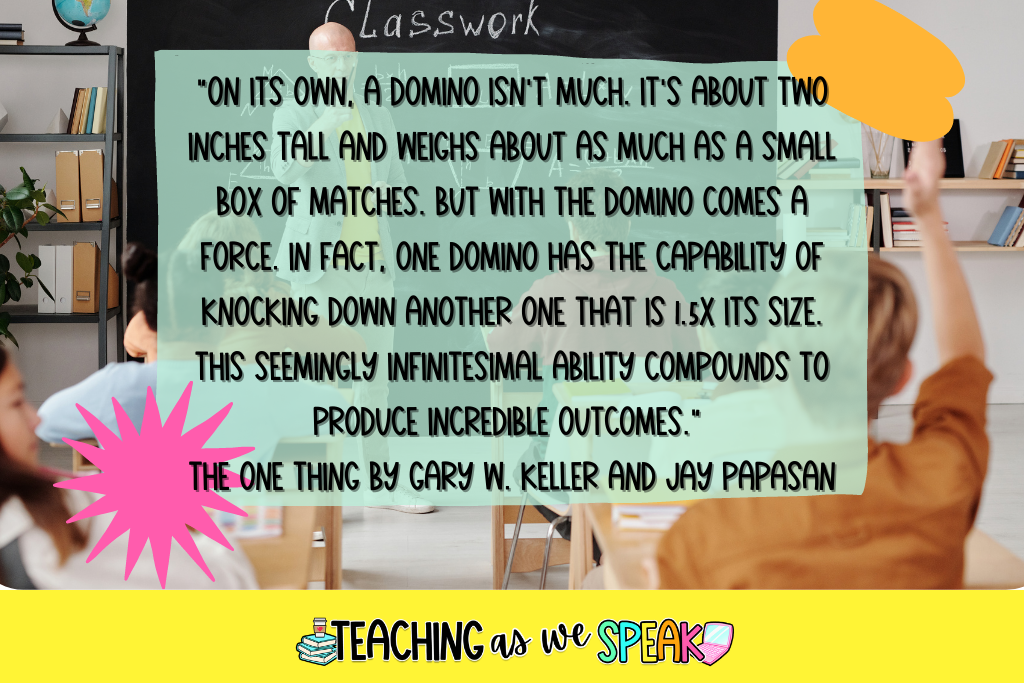
Let’s relate this to teaching. Let’s say you want your students to become better communicators. What’s one small, simple habit that will lead to your students becoming better communicators. For this, you want to think as small as possible. One example is to have every student greet the person/people next to them at the beginning of the day. It’s small, but imagine how much warmer the class will feel if students are saying good morning to one another.
Once that small habit is mastered, I would then move on to the next habit, which could be students saying good morning and then saying how they are feeling that day.
Get the idea? Comment down below with your ideas for habit stacking!
Click here to download Project-Based Learning and Soft Skills: The Complete Guide.
Hurdle #3 Facing Teachers Teaching Students Soft Skills-The A Word
One of the biggest reasons teachers avoid soft skills is because they aren’t easy to assess. You can’t give students a quiz on creativity and give them a score out of 10. So how do we measure the mastery of soft skills?
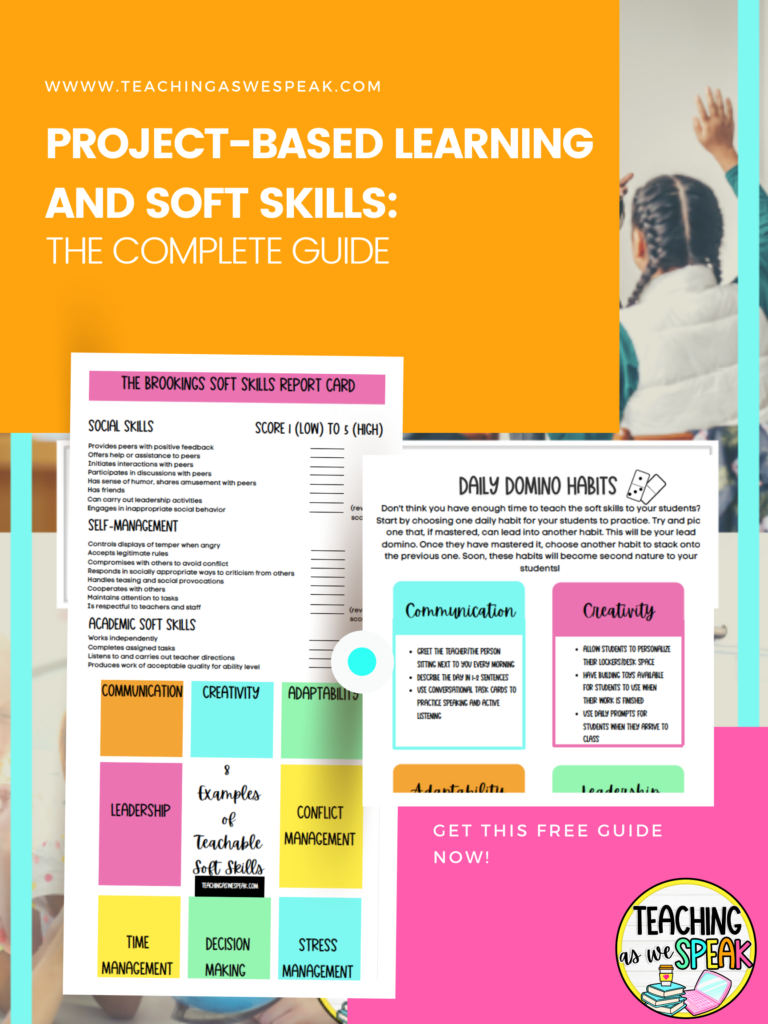
While many skills are not found in curriculum standards, they do help in developing skills that are assessed by state/provincial standards. For example, decision-making is not included a technical skill that is assessed in any exams, however, decision-making skills will help students in choosing appropriate reading material, choosing the right genre of writing to fit a specific task and can come in handy when students are choosing group members that will help them excel.
While there’s no formal assessment for evaluating students’ strengths when it comes to soft skills, there are some helpful self-assessment and formative assessment tools out there. Click here to check out my blog post about types of assessments.
For example, the Brookings Soft Skills report card is a way for teachers to observe and informally evaluate students (see image below).
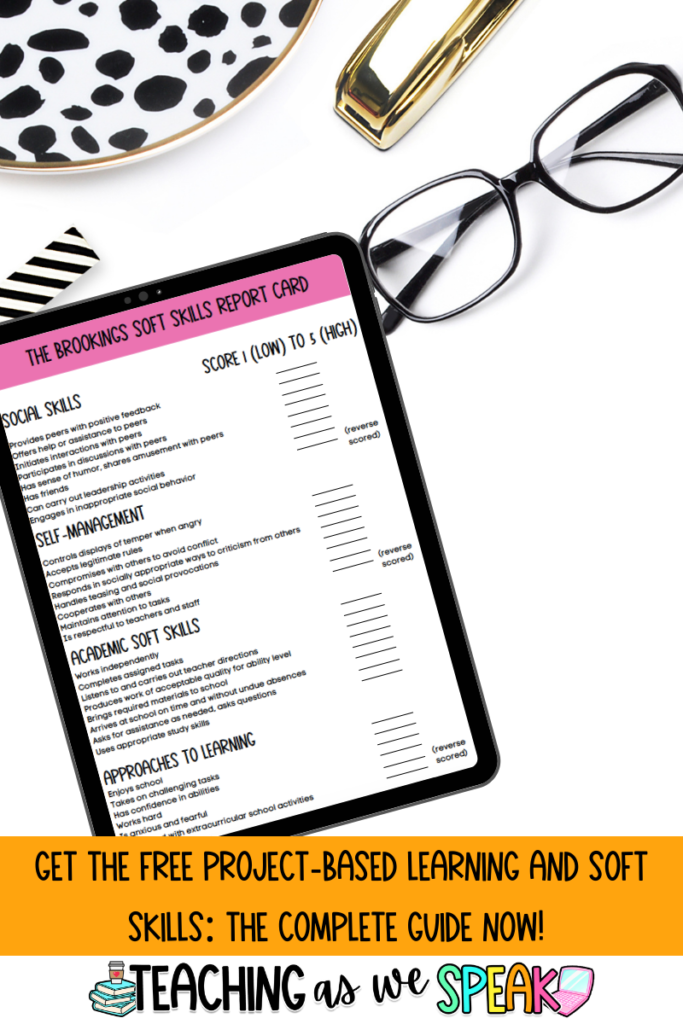
The original version of this “report card” can be found at https://www.brookings.edu/research/grading-soft-skills-the-brookings-soft-skills-report-card/
I have included the colourful version of this resource in my Project-Based Learning and Soft Skills: The Complete Guide. Click here to get the guide now!
Another tool that you can use as a self-assessment with your students is the Grit Scale at the following site: https://angeladuckworth.com/grit-scale/
Final Thoughts
As teachers, our goal should always be to help students become well-rounded individuals. We know we must focus on competencies and standards, however, we mustn’t forget about soft skills.
If we spend quality time engaging our students in activities that promote soft skills, our classrooms will become more engaging, meaningful and purposeful.
Have questions? Comment down below!
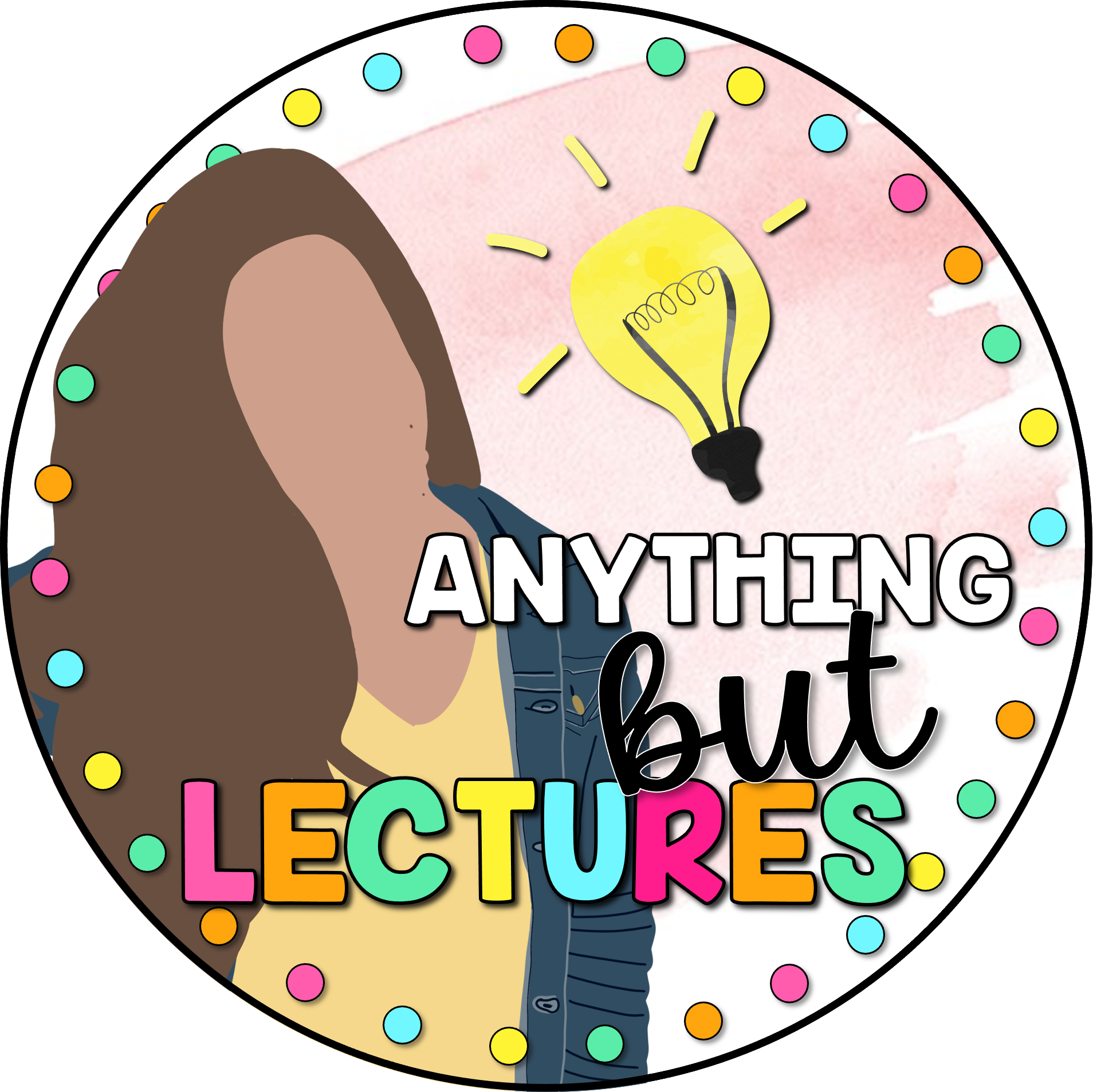




2 thoughts on “The Top 3 Hurdles Facing Teachers Teaching Students Soft Skills”